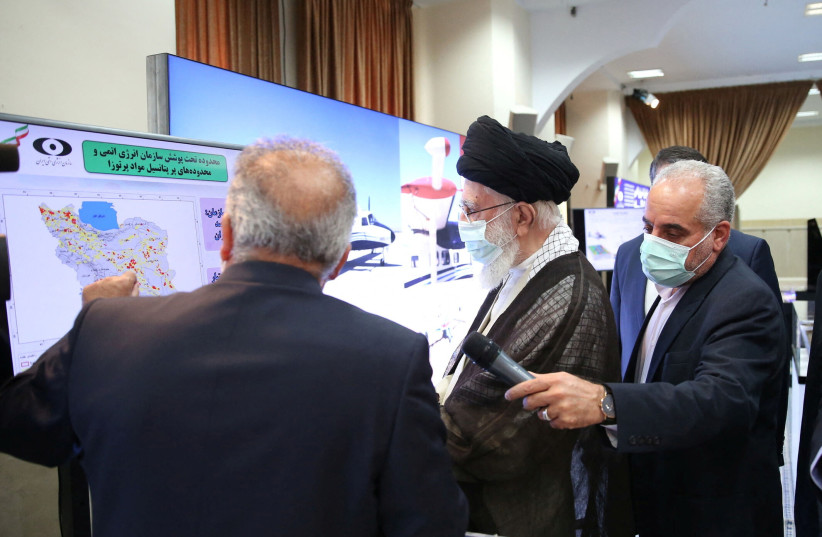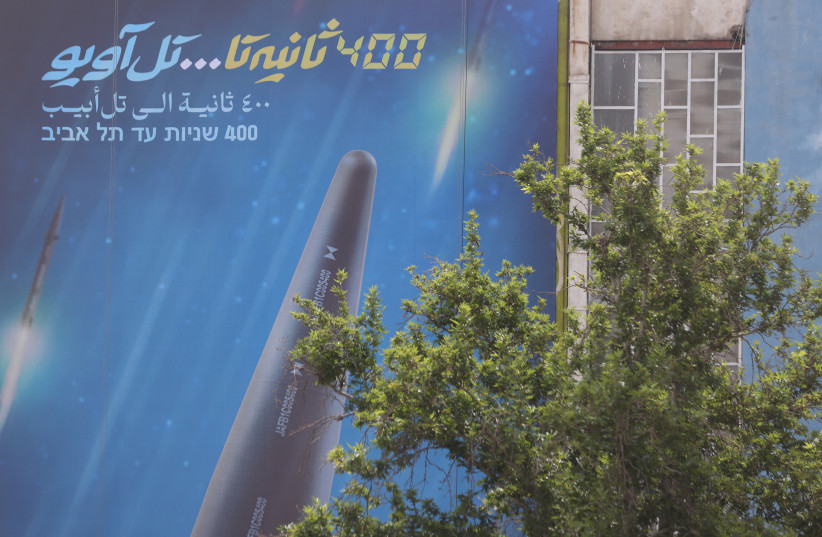What game is Iran playing, suddenly slowing down its nuclear program?
Iran sent very strong signals between last November and this January that it was pushing the envelope further with its nuclear-weapons program. Why, then, did it suddenly slow things down in February?
Is this a larger policy change? Or is Tehran just playing games again, just before the International Atomic Energy Agency Board of Governors is due to meet in early March?
Iran has reduced its stockpile of 60% enriched uranium by 6.8 kilograms, after having grown it almost continuously since early 2021, the IAEA reported Monday.
On the one hand, this is significant. It not only is complying with the West’s request to freeze its 60% highly enriched uranium progress, but rather, it is also reducing the existing stock.
Sixty-percent enriched uranium is only one level away from the 90% weaponized level. So, while meaningful symbolically, in statistical terms, the change is not worth much.

Symbolically meaningful, but in practice not significant
The reduction was from 128.3 kg. to 121.5 kg. leaves Iran with enough enriched uranium at the 60% level to take the small jump to 90% and in about a week have enough weaponized uranium for three nuclear weapons.
Additionally, some of the diluted uranium was only at the 20% level; other uranium enrichment at that level increased from 567 kg. to 712 kg.
It is currently estimated that Tehran has enough enriched uranium at the 20% level to develop another four weapons – if it decides to try for a “nuclear breakout.”
Combined, that means even after this backstep, Iran still has significant enriched uranium quantities to have seven to 10 nuclear bombs’ worth of uranium within a couple of months. This is because the major jump for enriching uranium is from low enriched levels of 3% or 5% up to 20%, according to scientists.
From 20%, the qualitative distance to 90% is shorter than the distance to get to 20% in the first place.
Iran expelled IAEA inspectors in September
And that is not the only problem Tehran failed to address.
In September, it tossed out eight of the most important IAEA inspectors, the same ones who caught Iran enriching up to 84% in one nuclear facility in February 2022.
As well, the ayatollahs once again violated a deal with the IAEA to restore much of the camera surveillance access of its facilities, which it took away in early 2021 and again in mid-2022.
Tehran is also not even trying to answer the IAEA’s questions about military aspects of its nuclear program, which the Mossad revealed from nuclear secrets it seized in a 2018 raid in Tehran.
On Wednesday, it was reported that Iranian Information and Communications Technology Minister Issa Zarepour had told state media a Russian space launch vehicle would send an Iranian satellite to space later this week.
As usual with Iranian space launches, complicated questions arise about whether there is dual-use technology that could lead to advances in Iran’s nuclear-weapons program, underlying a lack of trust and inside knowledge.
Until now, most of the focus has been on whether Tehran could weaponize enough uranium for a nuclear bomb. But another key element for nuclear weapons is the ability to deliver or fire them at a target.

Iran is also pursuing delivery mechanisms
Last December, Iran launched a rocket with a space capsule that had a living animal in it, as Tehran pressed on with its plans to send astronauts into space. The report said the capsule had reached an altitude of 130 kilometers.
In September, Iran’s Islamic Revolutionary Guard Corps successfully launched a third satellite into low orbit, after working on the project for only a few years. The satellite was the third version of the imaging satellite Noor, which means light in Persian. The Noor-3 satellite was reportedly placed in an orbit 450 km. above Earth.
In August 2022, an Iranian-owned, Russian-built satellite – presented as having the capability to take high-resolution photos – was successfully launched from Kazakhstan in a joint Russian-Iranian project.
This all points to Iranian progress in delivering nuclear weapons – should it ever move in that direction. Tehran only made a slight tactical retreat this week to avoid a harsh censure from the IAEA next week.
By tossing a bone to the IAEA and the West, it will be harder for the IAEA to censure Tehran, let alone refer the issue to the UN Security Council for a more significant confrontation.
Iran may also temporarily be somewhat deflated by attacks on its proxies in Yemen, Iraq, and Syria, as well as Israeli victories against Hamas in Gaza and Hezbollah in Lebanon.
But for Iran to reduce the threat it presents, it would need to reduce or ship out far more of its uranium stock and address the other issues that continue to suggest that its purposes are nefarious.





Comments are closed.